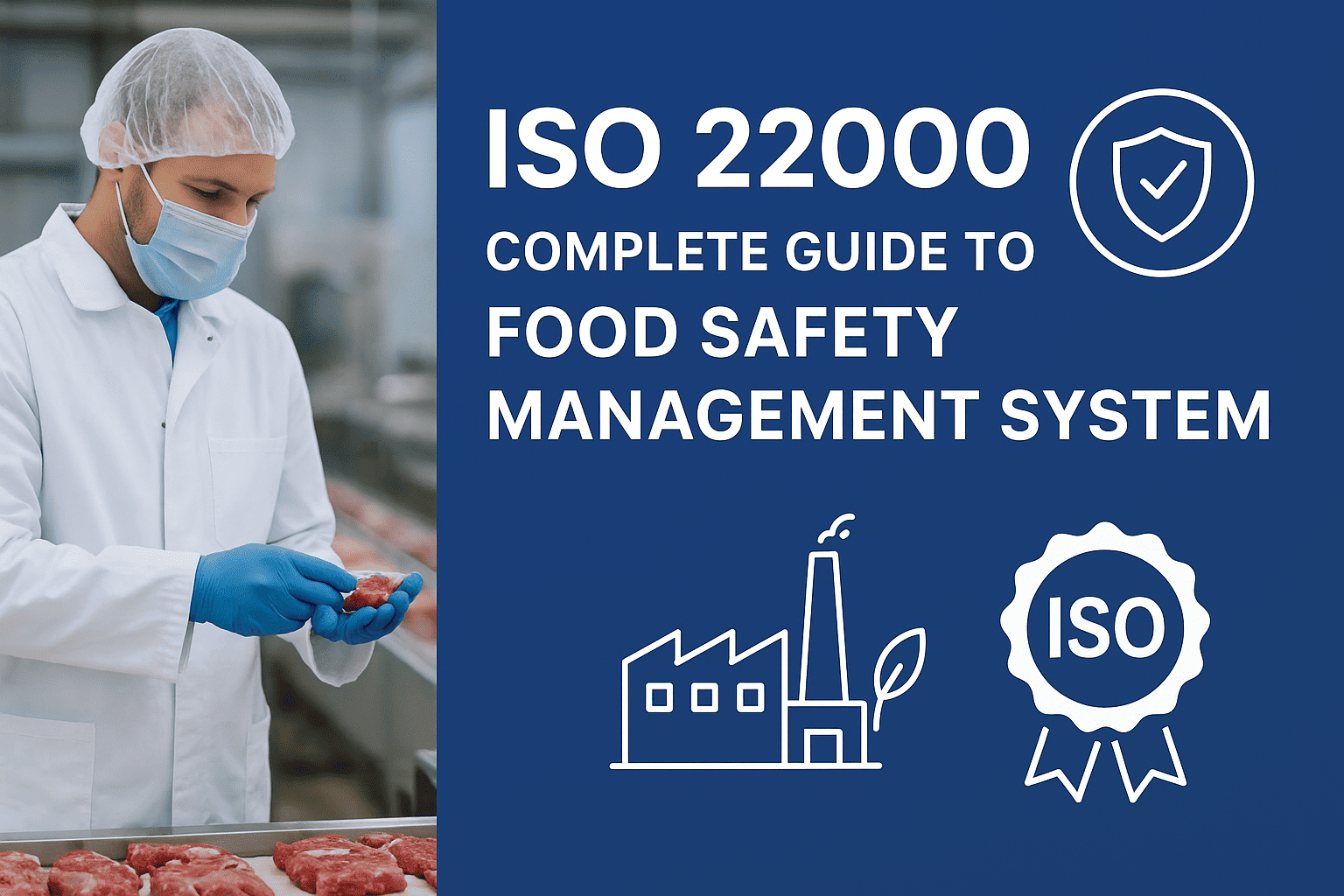
Food safety is no longer just a regulatory requirement , it has become a strategic business priority. With global supply chains, stricter regulations, and rising consumer expectations, businesses must ensure safety from farm to fork.Failure to do so risks recalls, financial loss, and reputational damage. To meet these challenges, the ISO 22000:2018 standard provides a structured framework for implementing a Food Safety Management System (FSMS) that builds trust, reduces risks, and ensures compliance across the entire food chain.
What is ISO 22000?
ISO 22000 is an international food safety standard that applies to all organizations involved in the food chain. It integrates:
HACCP (Hazard Analysis and Critical Control Points) from Codex Alimentarius.
The management system approach common to ISO standards like ISO 9001 (Quality Management).
Unlike standards that cover specific sectors, ISO 22000 covers all stakeholders in the food chain—from farmers and processors to packaging suppliers, transporters, distributors, and retailers.
This makes ISO 22000 one of the most flexible and widely accepted food safety certifications globally.
Key Features of ISO 22000
1. Integration of HACCP and PRPs
HACCP provides a structured hazard analysis and control process.
Prerequisite Programs (PRPs) ensure basic hygiene, sanitation, and facility practices.
Operational PRPs (OPRPs) target hazards not covered under CCPs.
2. Risk-Based Thinking
ISO 22000 requires organizations to address risks at both:
Organizational level (Strategic and business risks).
Operational level (Food safety hazards).
3. PDCA Cycle
The Plan-Do-Check-Act cycle is applied twice:
At the management system level (strategy, resources, leadership).
At the operational level (hazard analysis, monitoring, verification).
4. Communication Across the Food Chain
Food safety is a shared responsibility. ISO 22000 emphasizes:
Internal communication between departments and leadership.
External communication with suppliers, regulators, contractors, and customers.
Benefits of ISO 22000 Certification
Adopting ISO 22000 certification delivers benefits beyond compliance:
Certification improves international credibility.
Proactive controls lower chances of recalls and foodborne illness.
Streamlined processes cut duplication and reduce costs.
Demonstrates commitment to safety and transparency.
Encourages a strong food safety culture.
For businesses, ISO 22000 isn’t just about certification—it’s about building long-term resilience and trust.
Challenges in Implementation
While ISO 22000 provides value, businesses may face obstacles such as:
SMEs may find training and audits costly.
Ensuring compliance across multiple suppliers is challenging.
Cultural change: Building a food safety mindset requires leadership and employee buy-in.
Aligning ISO 22000 with other schemes (FSSC 22000, BRCGS, IFS) requires careful planning.
ISO 22000 vs. Other Food Safety Standards
FSSC 22000 Builds on ISO 22000 with industry-specific PRPs and is GFSI recognized.
BRCGS / IFS More prescriptive, audit-driven standards, often required by retailers.
HACCP (Codex) Scientific hazard control method, but less comprehensive than ISO 22000.
For global trade and retail acceptance, many businesses use ISO 22000 as a foundation and progress to FSSC 22000.
ISO 22000 is more than a compliance tool , it is a strategic framework for food safety, business growth, and consumer trust. By combining HACCP principles with management system practices, ISO 22000 ensures that organizations deliver safe, reliable, and trusted food products while gaining access to new markets.
For businesses operating in today’s competitive food industry, ISO 22000 certification is essential for long-term success.
Frequently Asked Questions (FAQ)
Q1: Who needs ISO 22000 certification?
Any organization in the food chain, including producers, processors, packaging companies, transporters, and retailers.
Q2: Is ISO 22000 recognized worldwide?
Yes. ISO 22000 is an international standard widely accepted across global food markets.
Q3: How is ISO 22000 different from HACCP?
HACCP focuses on hazard control, while ISO 22000 integrates HACCP into a full management system for broader risk management.
Q4: How long does ISO 22000 certification take?
It varies depending on company size, complexity, and existing systems—typically 6–12 months.
